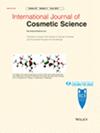Performance of hybrid diffuse reflectance spectroscopy (HDRS-ISO 23698) methodology for assessment of sunscreen protection in the ALT-SPF Consortium validation study
Abstract
Objective
Alternative methods to the traditional in vivo sun protection factor (SPF) test are desirable for many reasons. Hybrid DRS (HDRS) (combining in vitro transmission spectroscopy with in vivo DRS spectroscopy) was used in an extensive ring study to characterize its ability to estimate topical sunscreen protection and compared with the currently recognized ‘gold standard’ human in vivo Sun Protection Factor (SPF-ISO24444), Ultraviolet-A Protection Factor (UVA-PF), and Critical Wavelength (CW) (ISO 24443) Reference Methods sponsored by the Alternative SPF Consortium.
Methods
Diffuse reflectance spectroscopy (DRS) of skin provides a rapid, convenient non-invasive tool to evaluate skin properties as well as the optical properties of materials applied to the skin, such as sunscreens. DRS methodology combines in vivo measurement of sunscreen absorbance on skin in the Ultraviolet A (UVA) region with full spectrum in vitro spectrophotometric absorbance scans to provide a full spectrum measurement of the protection of sunscreen on skin.
Results
Results from testing with both monochromatic and polychromatic HDRS devices provided strong correlation of SPF, UVA-PF and Critical Wavelength results with their corresponding ‘gold standard’ counterpart methods in Study 1 for bias (or ‘accuracy’), however with more variability within certain product types. Further training of personnel conducting the HDRS studies was conducted prior to a second follow-up ring study using many of the same blinded samples from Study 1 in addition to Reference Standard sunscreens.
Conclusions
The results showed marked improvement in the variability to a level equivalent to the reference methods while maintaining accuracy of the estimates of the protection values. Virtually all estimates were within the Prediction Intervals (PI) of the reference methods for the second study. HDRS offers the ability to accurately assess sunscreen performance for SPF, UVA-PF as well as CW without invasive damage to test subjects and offers in the future the opportunity to assess water resistance performance.


 求助内容:
求助内容: 应助结果提醒方式:
应助结果提醒方式:


